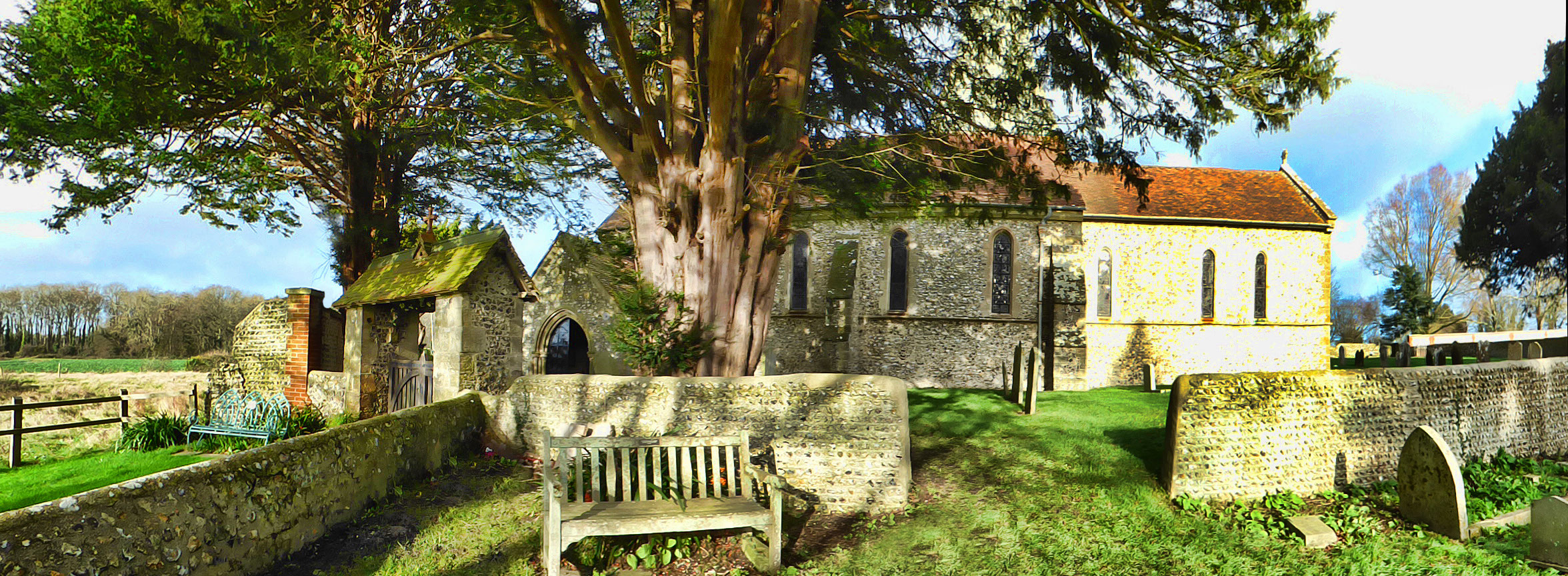Patching Church

St. John the Divine Church, Patching
Click here to view a guide
Patching is first mentioned in 948 when it was given by Wilfric to Canterbury; Patching became, together with Tarring to which it was attached, a 'peculiar' of the Archbishop of Canterbury, i.e. under his personal jurisdiction. The Archbishop is still joint patron, there are still the remains of his palace at Tarring and there has long been an unproved rumour that an Archbishop lies buried at Patching.
Patching Church, built soon after 1200, appears in February 1203 as a Chapel dependent on its mother Church at Tarring, but in August 1282 Archbishop Peckham restored its independence and from this date to the present day there is an unbroken list of its Rectors and Vicars.
In 1767 it was re-attached to Tarring and the rectory pulled down. This continued until 1849, when it was again separated and the present rectory built. In the course of the 19th century, as in the case of most other Churches, heavy restoration was necessary.
In 1835 the Church was 'repaired and beautified', largely, it appears, at the expense of Sir Richard Hunter, who also gave the silver alms dish in 1842. A tablet commemorating these events and dated 1835 was found under the choir stalls. Further work was done in 1856 by Sir Richard's kinsman, Sir John Kirkland. More work was done in 1889 (the roof guttering bears this date). The spire, formerly shingled, was re-done and, as the dedication had been lost, it was re-dedicated to St John the Divine.
The Church has the simple early English lancet windows of its period. In spite of the smallness of the population, the Church was once considerably larger. There was probably a north aisle with the tower at its end, continued by an aisle or chapel on the north side of the chancel. Moreover the west end of the present nave has clearly been shortened but it is not known when these changes took place.
A distinguished authority of 1830 states that the chancel windows, once blocked, were restored and glazed by a rector in about 1830, and that the base of an older font forms part of the stile over the north wall of the churchyard. The present panelled font, perpendicular in style, is about 200 years later in date than the Church.
In the Victorian pulpit there are carved panels which may well be of old Italian origin. There are also two paintings in excellent condition and of more than ordinary merit. According to the donor Mr Noel, the copy of Ruben's 'Descent from the Cross' is by a distinguished Belgian artist, while the copy of Murillo's 'Madonna and Child' was bought in Florence in the 1880s. Experts have commented on the pleasing proportions of the modern reredos.
Church Plate
'The twin Downland villages of Clapham and Patching possess one of the finest collections in the entire county' (E. Joyce)
1. Silver communion cup, hallmark 1568
2. Silver flagon, between 1690-1696
3. Silver stand paten, between 1700-1703
4. Silver alms dish, hallmark 1834 (presented by Sir R Hunter)
5. Sheffield plate cruet (one of a pair, the other at Clapham)
Church plate is a collective term for church objects made of precious metals. Many parishes still use ancient communion vessels which provide a unique continuity of worship.
